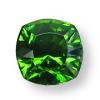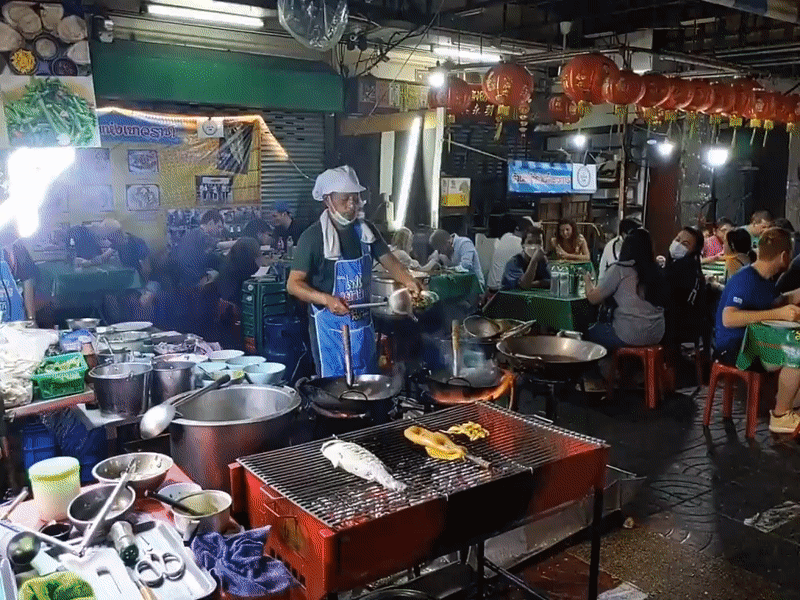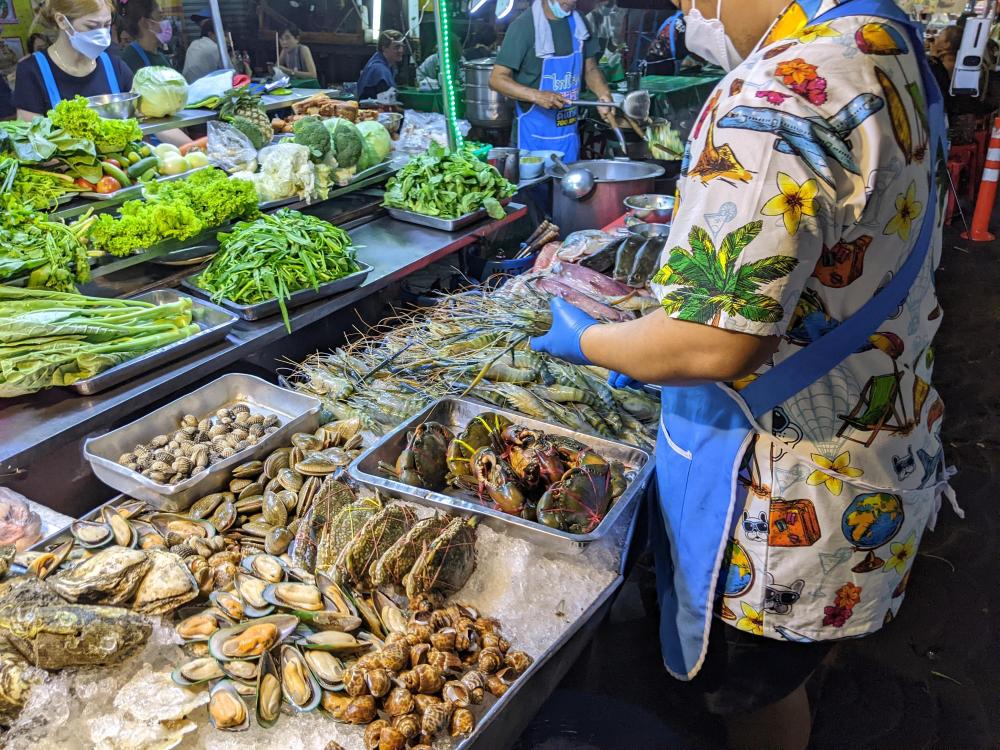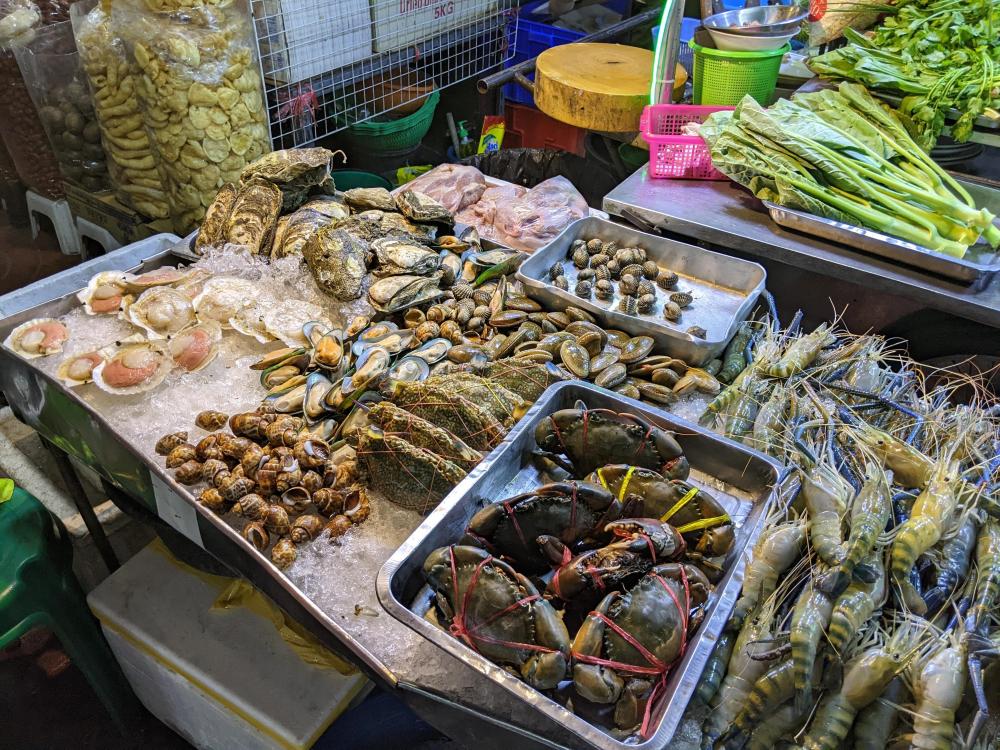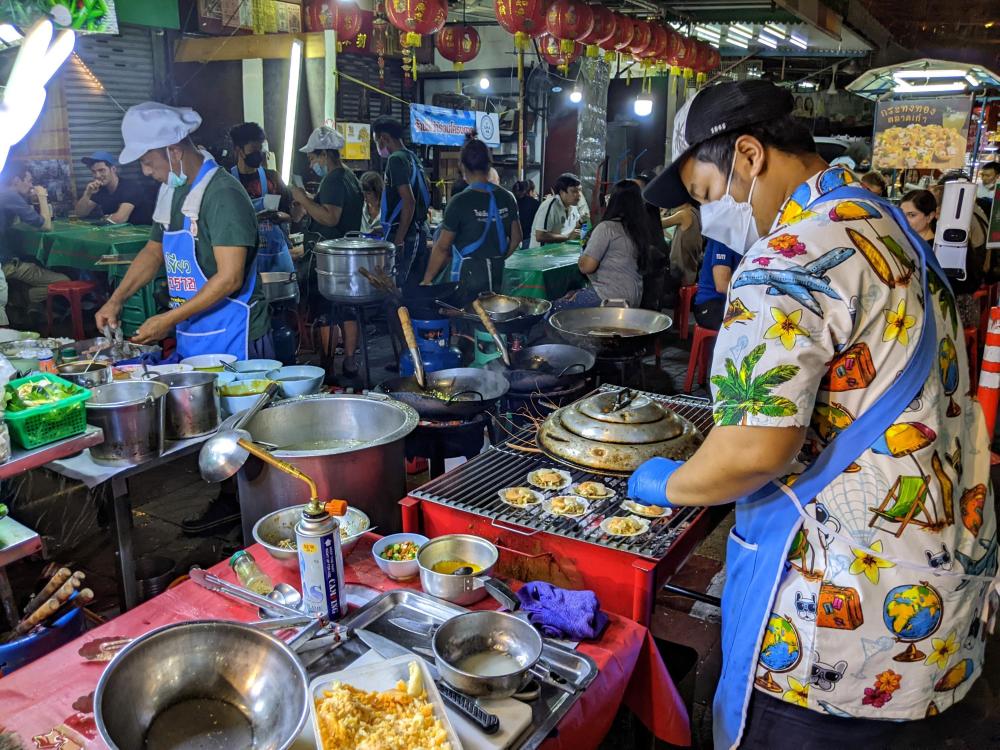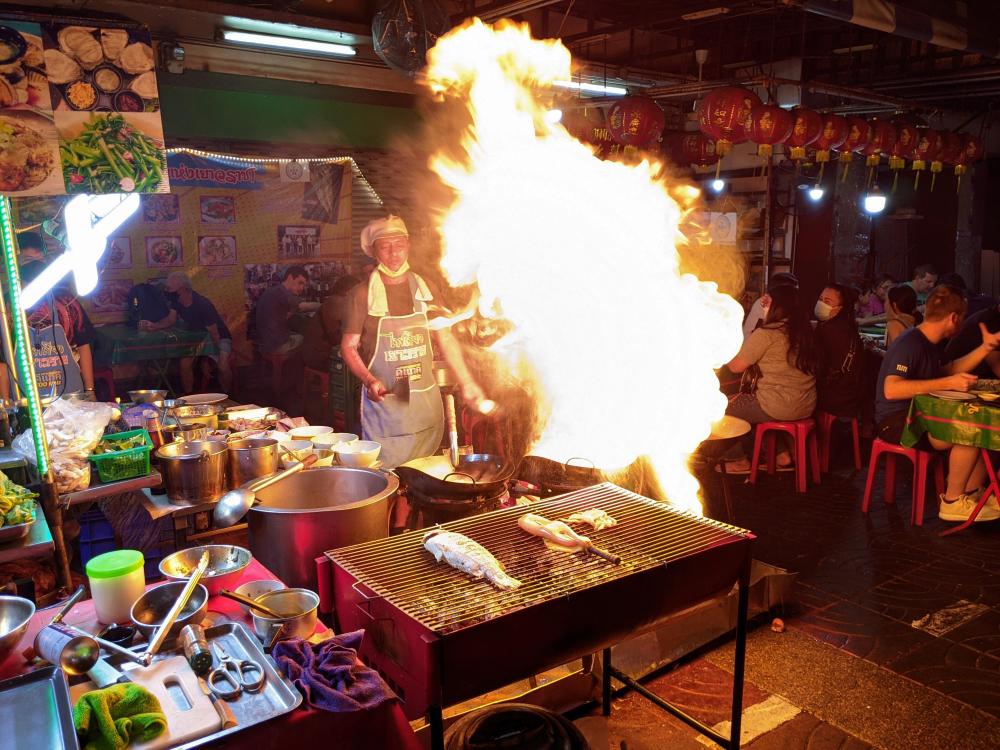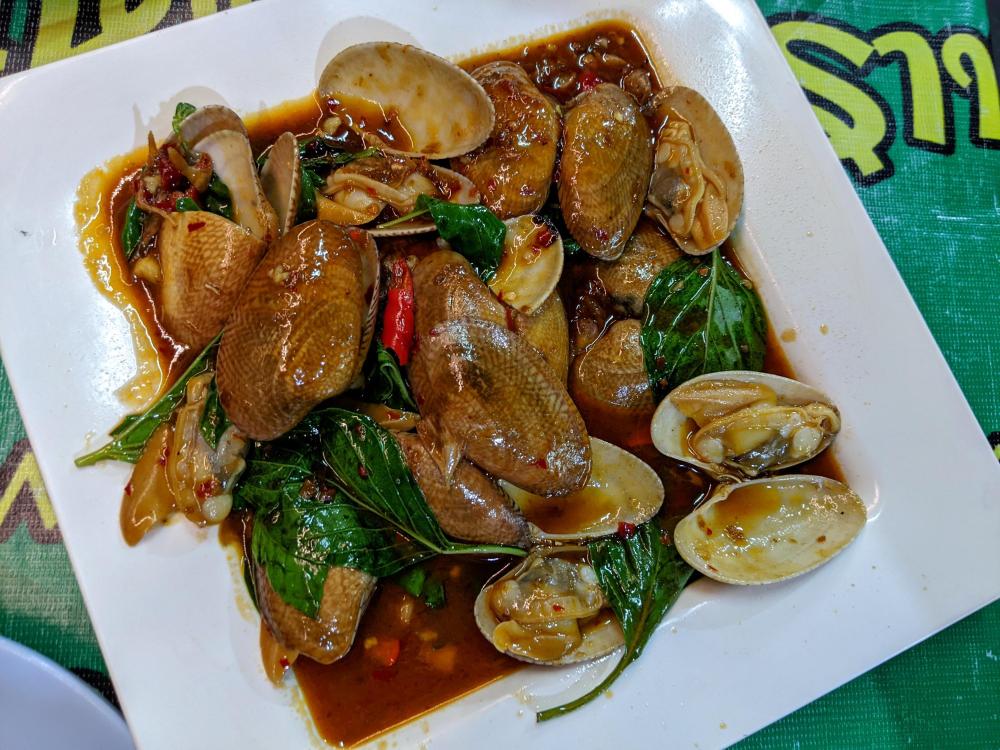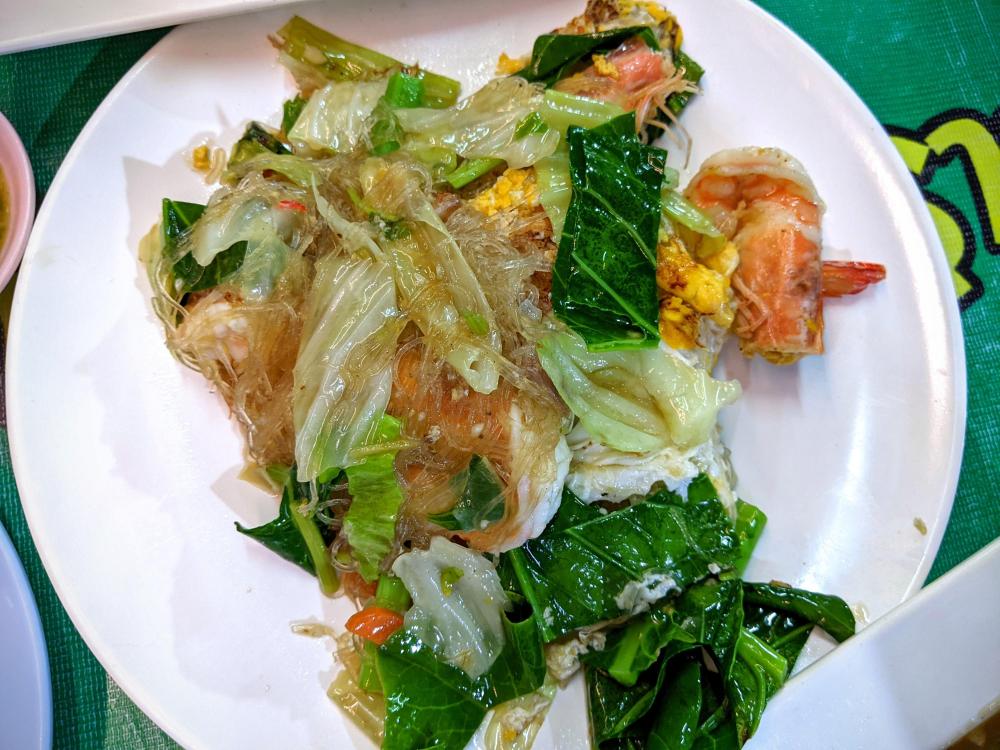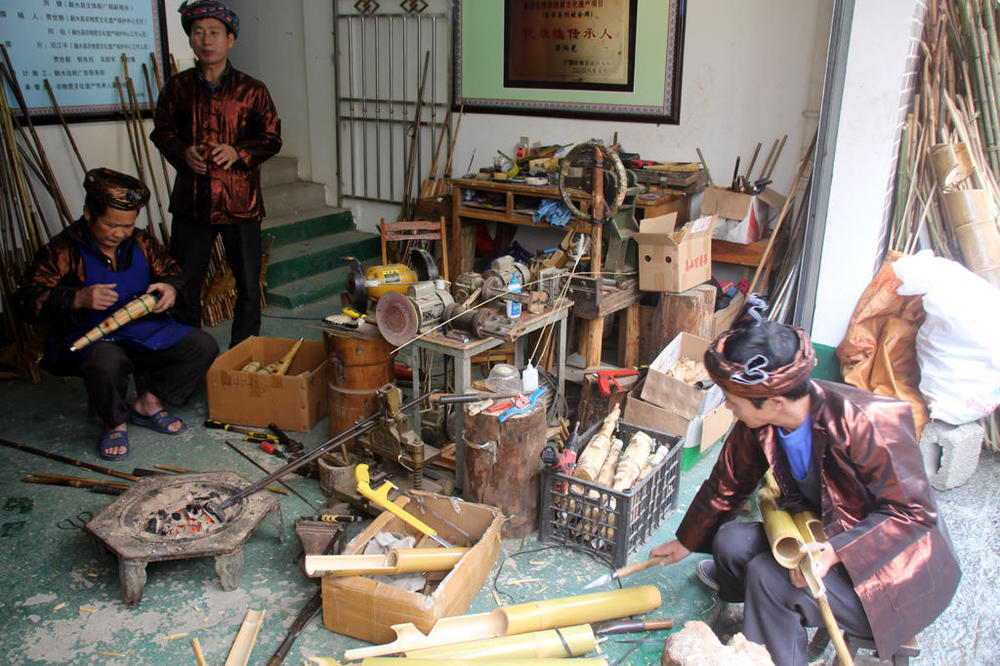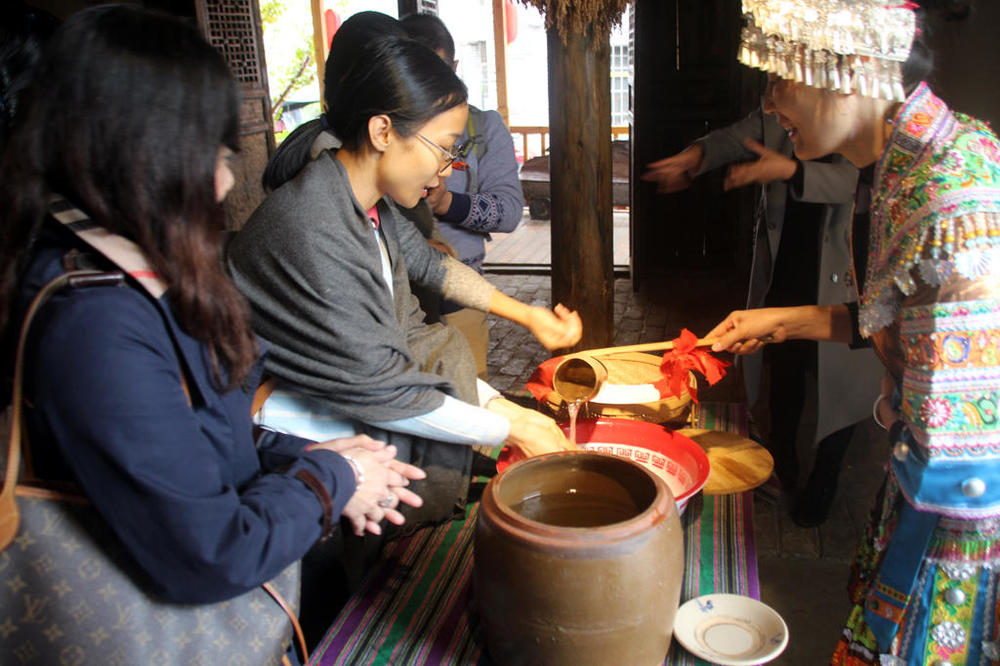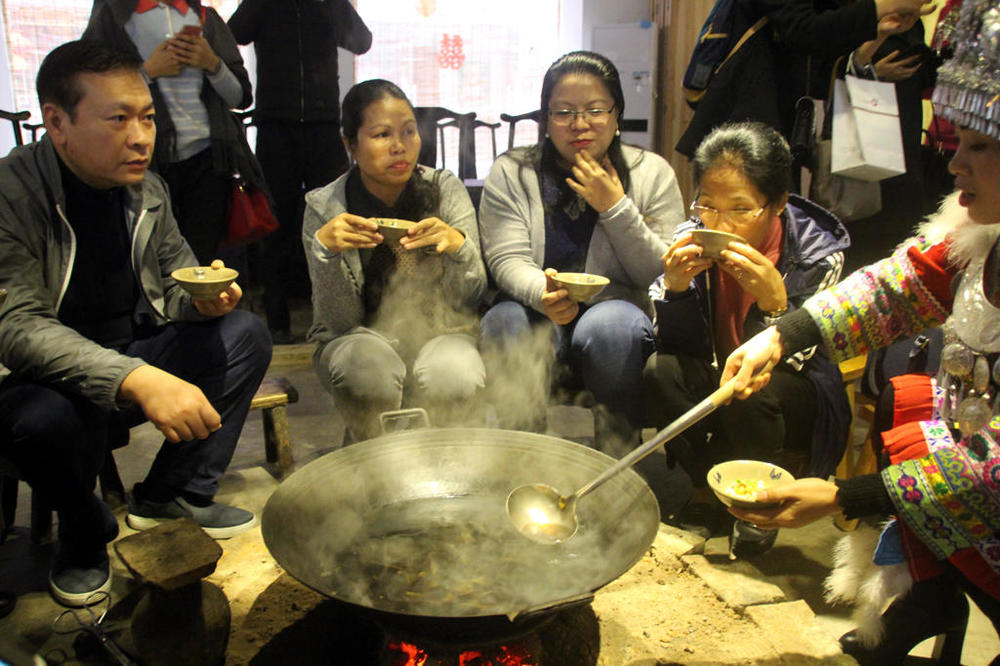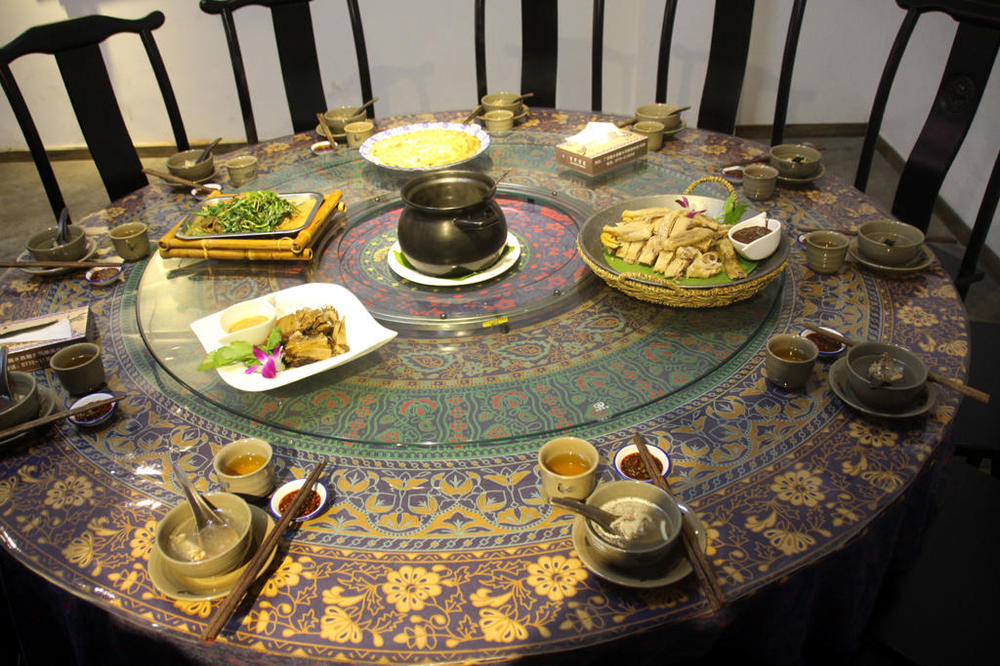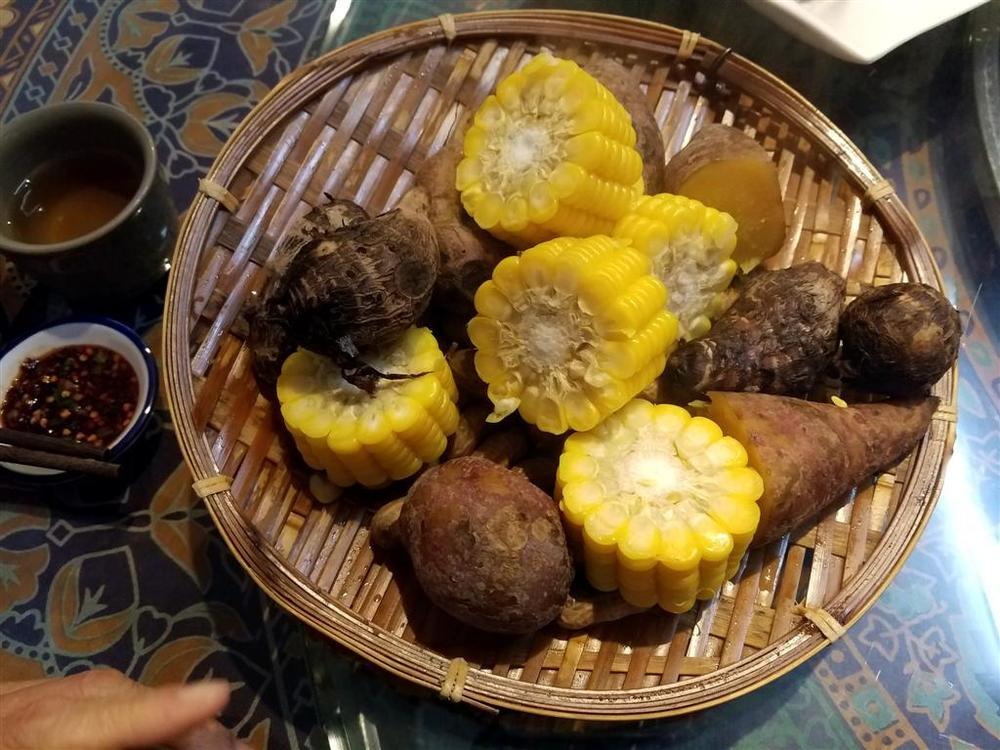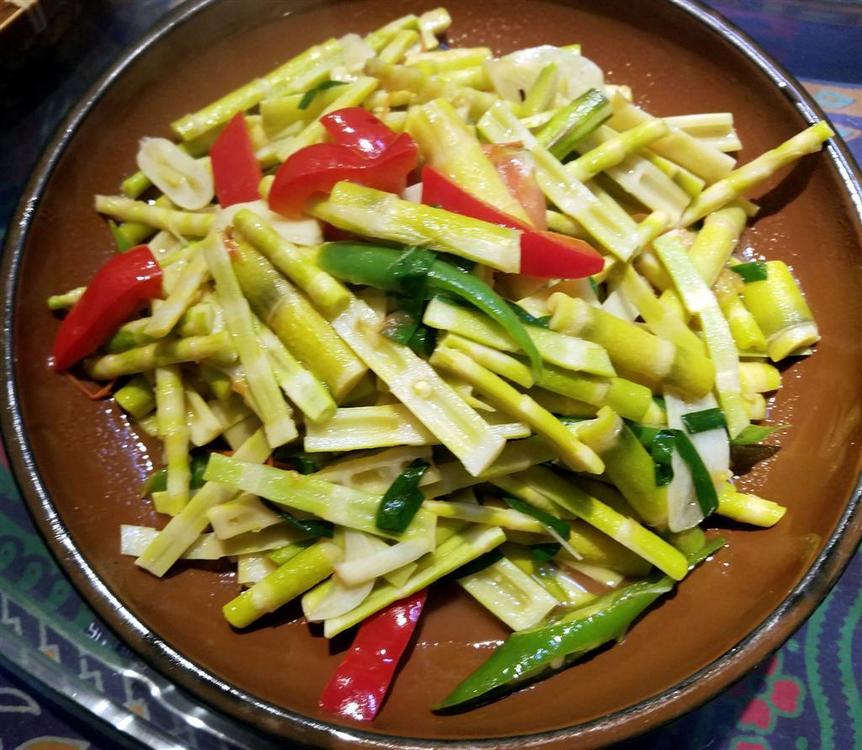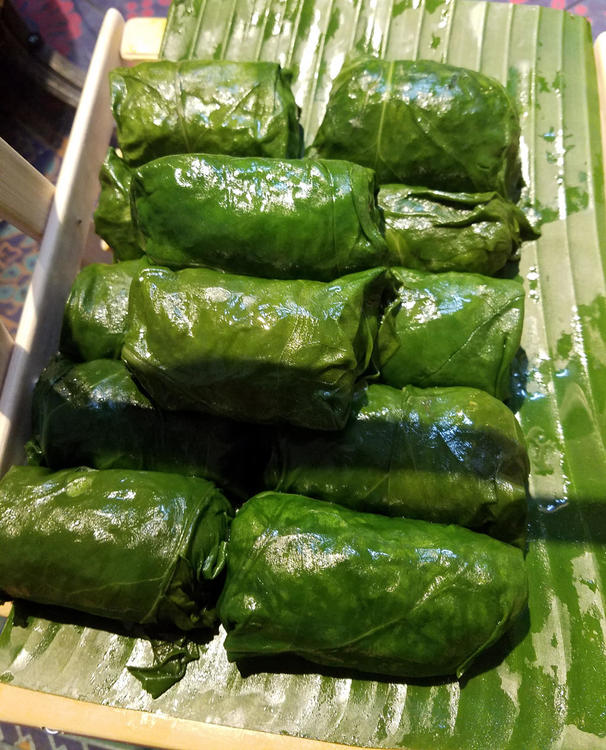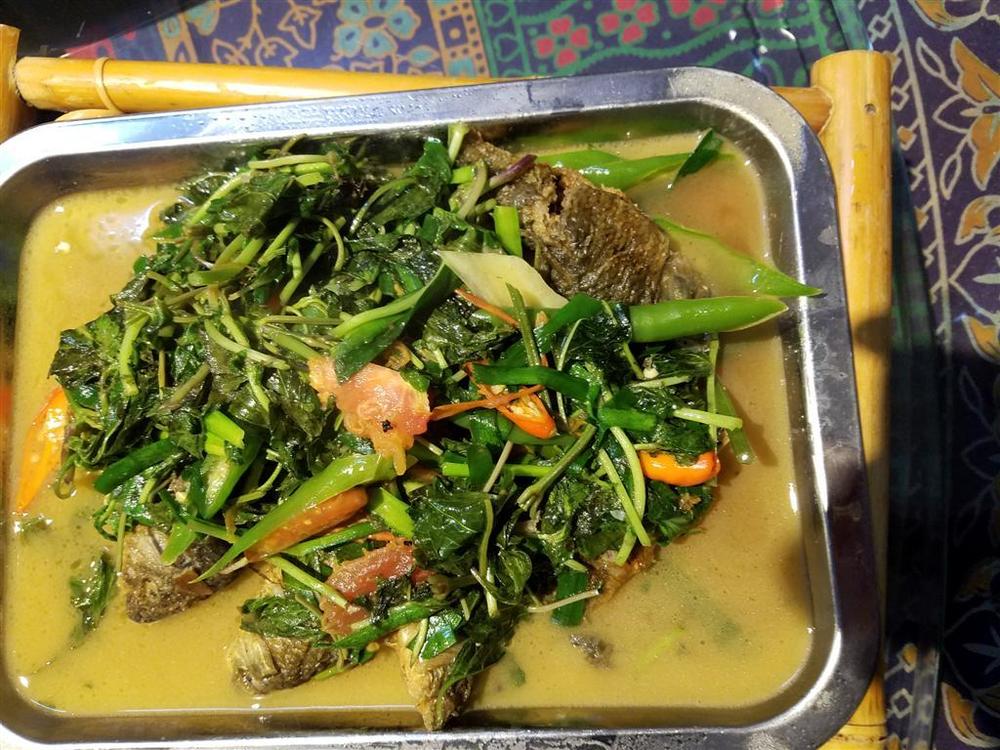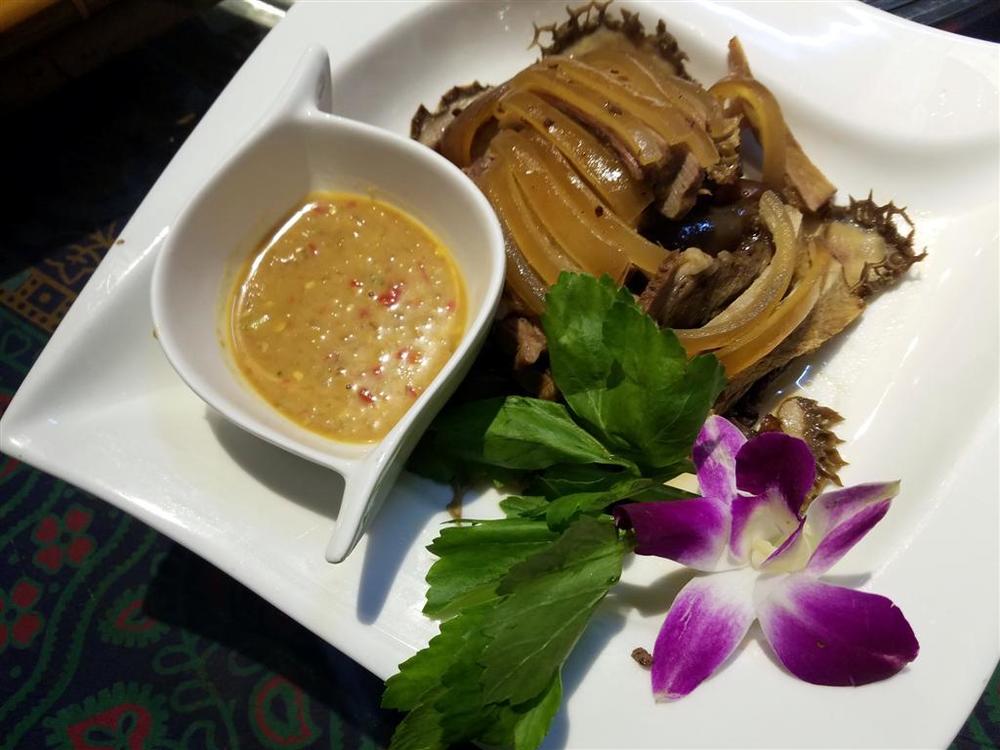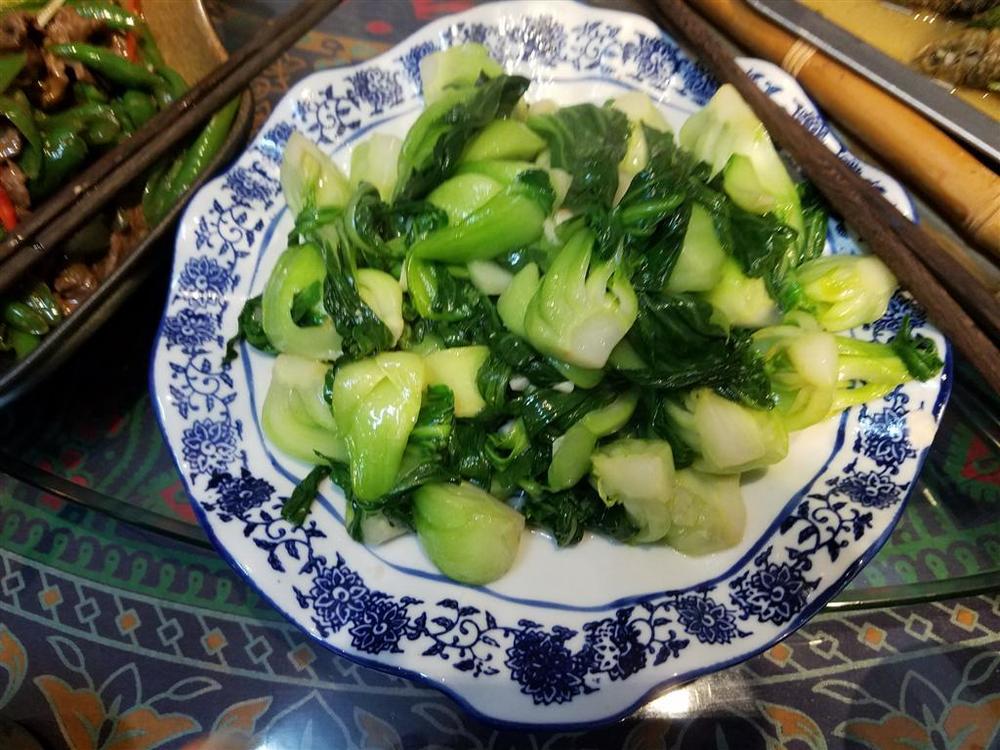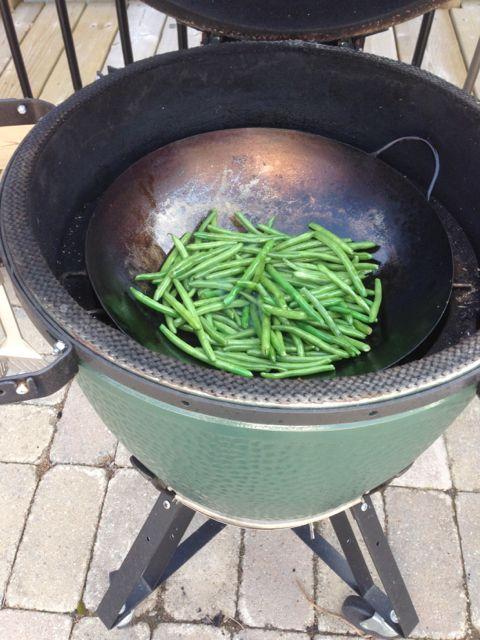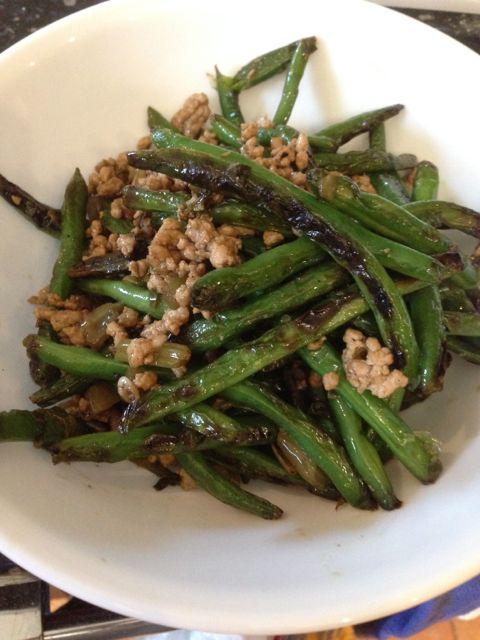Search the Community
Showing results for 'wok'.
Found 5,150 results
-
Sorry to say but those bamboo brushes might be good for a routine rinse after cooking by washing down a hot pan with hot water and giving the inside a good swirl and scrape, but for really charred and stuck on messes, it is useless and gimmicky. At most it scrapes off the top of charred bits but never really removes them. Its effectiveness is mostly placebo.. what it removes could be removed easily by any light abrasive, like a paper towel or a plastic pot scrubber. Not to mention it will fall apart with regular use in a couple months. I've gone through a dozen of them before I gave up. There's a reason why they are dirt cheap. I keep one by my decorative wok for hipster value
-
ITA, with some caveats. I will *lightly brush* both my cast iron pans and wok with a copper scrubbie and that takes off any clinging food. I will also scrub harder for burnt on food, and it will take off the carbonized food particles rather well without really damaging the coating. But yes, your general green scratchie sponge isn't going to take off a good seasoning, and neither is some detergent--which I will also use if the food is particularly icky. It just stands to reason--how easy is it using detergent to clean the old grease in an oven? It's virtually impossible. However, I had a heartbreaking incident a few weeks ago which does serve as a lesson. I usually have no qualms about throwing tomatoes or any other acidic food into my old #8 Griswold cast iron pan. It's one I picked up at a flea market many years ago and was midnight black and shiny, obviously through years of use by someone's grandma. Well, I picked up some marinated kalbi at our local Korean market, threw it in the hot pan, and to my dismay, after a few minutes my lovely seasoning started flaking off in large sheets. I don't know what it was about the short rib seasoning, but my pan really didn't like *that* acidity. Yes, I'm re-seasoning it. And sending my abject apologies to the anonymous grandma who cared for it so lovingly for so long.
-
I never scrub my cast iron with anything but a damp cloth dipped in dry baking soda if something is a bit stuck. Usually, just putting it on the stove, half-filled with water and bringing it to a simmer, then whisking it with one of the "straw" brushes for cleaning woks, is enough to remove any burnt-on crud. The two I use for cornbread haven't been washed for years. They are virtually non-stick - the interior looks like enamel. The chicken fryer does tend to build up a rim of carbonized stuff at the top level of the grease and I used to char it off every year or so by putting it in the barbecue upside-down on the charcoal until the stuff was burnt off. The detailed seasoning instructions at this site cast iron care are about as complete as anywhere. This site has instruction on how to clean a really cruddy piece of cast iron: Clean cast iron. However, since I discovered Carbon-Off, I have used it on a couple of pieces I picked up at a yard sale that looked like they had been used to cook rubber. Carbon-Off I like this product much better than the old type oven cleaners. I hope this helps.
-
For 'seasoning', that is presented as some obscure, delicate, mystical, quasi-religious nonsense -- just nonsense for short. Basically the 'seasoning' is just burned-on cooking grease. If the thing is really brand new, then maybe wipe it out with hot water and detergent and dry it, coat it with cooking oil or fat, heat it to smoking, and call it 'seasoned'. Then just cook on it. To avoid sticking, for the first few times, just use a little more oil or fat than you might otherwise. So, fry some hamburgers or bacon or make some hash browns or pancakes. Similarly for a stamped steel Chinese wok. Eventually the cooking surface will turn from gray to (the desirable, highly valued, revered, sought, coveted, cherished) nearly flat black. The only realistic way I know how to destroy a cast iron skillet or pot is to break it with thermal stress, e.g., getting it too hot or pouring cold water on one that's too hot. For lesser risks, do be aware that cast iron is really just iron so, with enough time and ordinary water, can develop a layer of bright red iron oxide (rust). You don't want that. So, after cleaning the thing, get it dry and keep it away from water. For 'cleaning' a 'seasoned' surface, sure, basically can do anything you want -- getting the burned-on grease off is so difficult that ordinary cleaning will do very little damage to the 'delicate, pure, 100% all-natural' 'seasoning'. One trick, though, it the useful fact that boiling water makes a fantastic solvent for nearly anything you might get on the cooking surface. So, to clean, just put some water in the thing, bring to a boil, get a wad of paper towels in one hand and a pot holder in the other, with the pot holder grab the handle of the skillet, dump nearly all the boiling water, and quickly wipe with the towels. Call it done. For the back side, f'get about it! The best cast iron skillets had the cooking surface machined. Now it appears that the skillets, from some cheap-o sources, are sold with the cooking surface just as it was from the sand casting. Bummer. Another nail in the coffin of the nonsense of the 'great advantages' of international trade. If all the academic economists and their world political engineering Foggy Bottom buddies were laid end to end, then it would be a good thing!
-
Brine: yes, with water, salt, lemon or lime juice, hot sauce (lots of all) Buttermilk: never. I guess I still harbor a few kosher sensibilities, which prevent me from mixing any milk product with poultry. Coating: basically all-purpose flour with lots of Old Bay and/or Goya adobo mixed in. Extra ground black pepper. Sometimes other flours, e.g. chickpea, as well (in which case then possibly a bit of ground fenugreek and curry powder, either Indian or Jamaican). I like spicy. I leave lots of the brine on the chix so the flour sticks. No batter, no crumbs. Frying medium: canola oil, sometimes with some cheap tasteless olive oil that I need to get rid of. And if I've filtered it to reuse, some chicken fat as well. Frying container: either my AllClad Chef Pan (kind of like a wok with a flat bottom and handles) or my new 12" cast iron skillet. White or dark: what are you, crazy? Take a chicken, cut it up: 2 wings, 2 legs, 2 thighs, 4 pieces of breast, and cut the backbone in half. The last is the best part, of course. Is this "Southern fried?" I don't know. I don't care. I like it.
-
Light starters for a special Louisiana dinner
HungryC replied to a topic in Louisiana: Cooking & Baking
Sauteed crab claws go over great....buy already prepped clawfingers. Melt 1 stick of butter per pound of claws in a wok or big saucepan, throw in small whole mushrooms or sliced larger ones. Add four or five minced cloves of garlic, two bunches of chopped green onions (tops & bottoms), plenty of black pepper, juice of half a lemon, three or four healthy shakes of worcestershire, and the crab claws. Toss around until the claws are heated through. Serve with lots of bread for sopping up all those onions & mushrooms. -
The chef put up a show when he saw me taking pictures. Clams in garlic and chili. Spicy and lightly sweet, with yellow bean sauce. Pad woon sen. A bit oily, but you can taste the hot wok. Seafood pad cha. Seafood in a herbal sauce - got chili. garlic, basil, fingerroot, green peppercorn. With rice and cheap bad beer. That was one heck of a street food meal.
- 206 replies
-
- 13
-

-

-

-
Last week, Liuzhou government invited a number of diplomats from Laos, Malaysia, Indonesia, Myanmar/Burma, Poland, and Germany to visit the city and prefecture. They also invited me along as an additional interpreter. We spent Tuesday, Wednesday and Thursday introducing the diplomats to the culture of the local ethnic groups and especially to their food culture. First off, we headed two hours north into the mountains of Rongshui Miao Autonomous County. The Miao people (苗族 miáo zú), who include the the Hmong, live in the mid-levels of mountains and are predominantly subsistence farmers. Our first port of call was the county town, also Rongshui (融水 róng shuǐ, literal meaning: Melt Water) where we were to have lunch. But before lunch we had to go meet some people and see their local crafts. These are people I know well from my frequent work trips to the area, but for the diplomats, it was all new. So, I had to wait for lunch, and I see no reason why you shouldn't either. Here are some of the people I live and work with. This lovely young woman is wearing the traditional costume of an unmarried girl. Many young women, including her, wear this every day, but most only on festive occasions. Her hat is made from silver (and is very heavy). Here is a closer look. Married women dispense with those gladrags and go for this look: As you can see she is weaving bamboo into a lantern cover. The men tend to go for this look, although I'm not sure that the Bluetooth earpiece for his cellphone is strictly traditional. The children don't get spared either This little girl is posing with the Malaysian Consul-General. After meeting these people we went on to visit a 芦笙 (lú shēng) workshop. The lusheng is a reed wind instrument and an important element in the Miao, Dong and Yao peoples' cultures. Then at last we headed to the restaurant, but as is their custom, in homes and restaurants, guests are barred from entering until they go through the ritual of the welcoming cup of home-brewed rice wine. The consular staff from Myanmar/Burma and Malaysia "unlock" the door. Then you have the ritual hand washing part. Having attended to your personal hygiene, but before entering the dining room, there is one more ritual to go through. You arrive here and sit around this fire and wok full of some mysterious liquid on the boil. On a nearby table is this Puffed rice, soy beans, peanuts and scallion. These are ladled into bowls. with a little salt, and then drowned in the "tea" brewing in the wok. This is 油茶 (yóu chá) or Oil Tea. The tea is made from Tea Seed Oil which is made from the seeds of the camellia bush. This dish is used as a welcoming offering to guests in homes and restaurants. Proper etiquette suggests that three cups is a minimum, but they will keep refilling your cup until you stop drinking. First time I had it I really didn't like it, but I persevered and now look forward to it. L-R: Director of the Foreign Affairs Dept of Liuzhou government, consuls-general of Malaysia, Myanmar, Laos. Having partaken of the oil tea, finally we are allowed to enter the dining room, where two tables have been laid out for our use. Let the eating, finally, begin. In no particular order: Steamed corn, taro and sweet potato Bamboo Shoots Duck Banana leaf stuffed with sticky rice and mixed vegetables and steamed. Egg pancake with unidentified greenery Stir fried pork and beans Stir fried Chinese banana (Ensete lasiocarpum) Pig Ears This may not look like much, but was the star of the trip. Rice paddy fish, deep fried in camellia tree seed oil with wild mountain herbs. We ate this at every meal, cooked with slight variations, but never tired of it. Stir fried Greens Our meal was accompanied by the wait staff singing to us and serving home-made rice wine (sweetish and made from the local sticky rice). Everything we ate was grown or reared within half a kilometre of the restaurant and was all free-range, organic. And utterly delicious. Roll on dinner time. On the trip I was designated the unofficial official photographer and ended up taking 1227 photographs. I just got back last night and was busy today, so I will try to post the rest of the first day (and dinner) as soon as I can.
-

Shopping at the asian market...help me make a plan.
nakji replied to a topic in China: Cooking & Baking
Check out this topic on favourite Chinese cookbooks....the best one for you really depends on how you like to cook. A lot of people recommend Barbara Tropp's Modern Chinese cooking, but my eyes glaze over halfway through the recipes, they're so detailed. I haven't cooked anything from it yet. It does have excellent methodology for cutting and wok preparation and maintenance, though. I cook regularly from The Revolutionary Chinese Cookbook, since the recipes reflect the sort of ingredients I have regular access to. The more you become familiar with Asian ingredients, the more you'll be able to discern between Chinese/Korean/Japanese/Thai/Vietnamese and so on. Check out some books from your local library to see what you might like to cook, and check out our regional forums too - there's tons of great information here. So true! Do you find the prices cheaper there by much? -
BTW KB : how do you 'diop' down into that hot wok? just stir it around ? welding gloves ? http://www.harborfreight.com/catalogsearch/result/?q=welding+gloves
-
Tonight decided it was time to pull out the wok and make some dry fried beans. Nothing better than woking outside on the BGE so you don't have to run the ventilation at full blast.
-
It's a large - I think the wok is 16 inches. I use the spider - legs up for somethings and down for others. The burns happen just from the heat coming around the sides of the wok. With the really long shovel and pair of ove gloves I've avoided further burns. I also have the adjustable rig - but don't actually find I use it much.
-
Kerry, I assume you have a large egg. If so do you have a spider from http://www.ceramicgrillstore.com/large-spider-big-green-egg.html ? With the spider legs down it raises the wok higher from the fire and holds it securely in place.Saving you from having to get your fingers burnt.See attached pics. What size is your wok?I have a 14" wok , spatula, and ladle from the www.wokshop.com. http://www.wokshop.com/store/detail.php?show=500 the handles are 18" long. The spider can be used with other eggcessories too. Are you familiiar with the adjustable rig from the ceramic grill store? It's great for multiple level cooking on the egg. Jon
-
Jon, Finding the right sized wok and getting a wok shovel long enough not to burn myself where the greatest challenges.
-
Here is where you can buy all kinds of accessories for the BGE including 1/2 moon ceramic baking plates, wok holders and double racks. https://ceramicgrillstore.com/collections/big-green-egg-medium-accessories-by-ceramic-grill-store
-
How much of a price difference is there? If it is less than $200, I would definitely go for the KJ - you aren't going to replace it any time soon and accessories that come with it are well worth that premium. I don't know what they are now, but in the summer of 2016 the large KJ was $780 at the roadshow. Pro-tip - you can get a smoking deal on the units they have unboxed for display. Around here people are lined up at the opening to try to get the display models. The down side is that you have to pay for it, then come back in the last hour of the event to pick it up. It isn't boxed up so you really have to pack it carefully. Bring 2X the padding that you think you will need, a large vehicle and at least one strong friend. We were there in the last hour and the person who had bought the large display model got talked into upgrading to an XL in the box. My buddy was right there to snap up the large. I know they they threw in a wok rig, cast iron grates and some other stuff, but I don't recall if that was in addition to a price break.
-
Kris - as HungryC said - you need to plan your cooks around the slow cooling time - you can get the sucker hot very quickly after a low cook. Only time I cook with the lid open is when I'm using a wok. Here is a link to a bunch of useful BGE topics that should apply to your kamodo - after all BGE is based on the kamodo. Later today I'll try to post some of the hints I have for better BGE cooking.
-
Saw a few BGE cooking questions upthread and wanted to throw my 2 cents in: --bread doesn't need any steam in the BGE, in my experience. If you're having problems with browning, increase the temp and raise the grid higher in the dome. Additionally, you can flip a mostly-cooked loaf over to even out the upper & lower browning. See these pretty loaves... --naan cooked directly on a preheated stone is the way to go. the walls of my egg are pretty filthy/sooty, I wouldn't want to eat anything cooked on 'em. Use a half-moon stone and you can do bread & a protein at the same time; this photo shows pita cooking, but I do naan the same way. The Egg is a great tool for stir-frying; the grid-raising ring sold by the Ceramic Grill Store inverts to hold a wok perfectly: Finally, char-grilled oysters might be the best thing to cook on an Egg, bar none:
-
I would really like to learn how to make tortillas that I saw made in Mexico. I've never had anything like them before or since. They had no resemblance to the thin wafers made either with corn or flour. I had them in a very touristy hotel near Chichen Itza. The sort of place with a big open air dining room. Some kids were practicing dancing with beer bottles on their heads with their dance teacher for the evening's performance. For lunch there was a buffet with various hot stews to put in the tortillas. There was a woman sitting down making and cooking tortillas. She had a bowl of corn dough and she formed balls, which she flattened out and then passed from hand to hand, stretching them. The resultant tortilla was small and relatively thick. The patty was slapped onto the wall of a hot wok-like pot, so that there were about six of these cooking at once. You waited for them to cook, she put as many as you wanted on your plate, and then you were free to eat until you exploded. Which was quite easy to do, because they were moist and corny tasting, with some burnt areas that added extra flavor, and the pork stew was superb. One right after another.
-
Dissatisfied with the quality of store-bought tortillas, I just bought myself a tortilla press and some 100% stone ground corn flour (imported from Mexico and cooked with lime). The recipe I used was: 2 cups masa flour 1/2 tsp salt 1 1/4 - 1 1/3 cups warm water. The dough came together well, rolled into balls nicely and when pressed peeled easily off the tortilla press (I think it's cast iron coated with aluminium). I started with a non-stick pan but found that the heat need to cook them was too high so swapped to cast iron which I put on high heat over a wok burner (inside from a domestic supply rather than an industrial one). Once I'd played around with it a bit, they came out as would be expected with some puffing and small burn marks. After cooking them (why not before? ) I checked threads here on eGullet and saw a pictorial on how to make them that corresponded to what I did. The taste was quite unlike any tortilla I have ever had (I'm in Australia and we're not so big on Mexican food as some of you folks are). I wound up making some chicken enchiladas which were delicious. My question is are there any special techniques or kitchen lore about making tortillas that I may have missed?
-
I've been going through my recipes in preparation for our celebration of all things asparagus. I thought I'd start with a Chinese-style asparagus dish. I think the first time I made it I probably surprised a few folks who typically only make steamed asparagus. They'd never imagine asparagus paired with Asian flavors. Sometimes I trim the stalks using a vegetable peeler, which makes the asparagus more tender to the bite. In this case I cut the asparagus stalks in half, giving a mix of the crunchy stalk with the inner, softer core. A quick blanch in boiling water. I usually add a few dashes of "Fruit Fresh" (basically ascorbic acid), which keeps the asparagus bright green. I don't need to pull it from the hot water and then plunge it into an ice bath to get the same effect. Then into a hot wok with some sesame oil, a spoon or two of chili, garlic, black bean sauce I buy at the Asian market, a sprinkle of sesame seeds and there we are.
-
My tale is not about bad food,(it was long ago, and I don't remember the meal), but about dangerous food.... Went to a pals house for dinner. we were sitting at the kitchen island having drinks. He pulls out his new electric wok and plugs it in on high, to heat, next to us on the island... He then put in a cup or so of oil in it, and the drinking continued, while it was getting really,really hot... Before I realized it , and could yell or duck, He poured in about a cup of soy and other liquid.....What a mess!!!Fortunately he fell back and did'nt get burned, and we escaped as well.... Close call... Bud
-
that's what I thought first too, but it does not work. If the spoon is flat on the table, the notch is cut into the right side, just a bit below the upper edge. Is it to scrape food off cooking chopsticks? I really can't find any way to use it, but since it adds some extra work in making the thing, I'd guess it has some reason to be there? Even with a wok, I can't figure out how to use that added feature.
-
I have become quite fond of cheap bamboo spoons. Two are P-shaped, and fit nicely into a wok or curved sauteuse. Two are flat with squared off ends, good for scraping fond from flat-bottomed pans. The bamboo spoons have survived many trips through the dishwasher, and can be replaced easily if they crack. I have a heavy wooden spoon with a bowl and squared-off end, perfect for making (and tasting) mole. I used to use it frequently, but it seems too nice to cook with so it has migrated to the bottom of the wooden spoon and wok utensil drawer. Wooden spoons give Mrs. C the willies, so she uses silicone or plastic.
-
How much of a frying mess do they make? Could you do them in, say. a wok (for minimum oil) or an open Instant Pot (for the high walls)?

